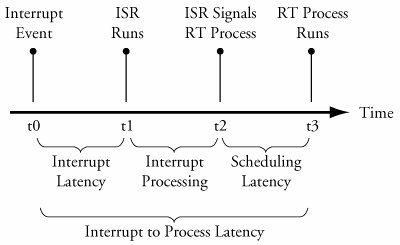
Comprehensive Real-World Guidance for Every Embedded Developer and Engineer
This book brings together indispensable knowledge for building efficient, high-value, Linux-based embedded products: information that has never been assembled in one place before. Drawing on years of experience as an embedded Linux consultant and field application engineer, Christopher Hallinan offers solutions for the specific technical issues you're most likely to face, demonstrates how to build an effective embedded Linux environment, and shows how to use it as productively as possible.
Hallinan begins by touring a typical Linux-based embedded system, introducing key concepts and components, and calling attention to differences between Linux and traditional embedded environments. Writing from the embedded developer's viewpoint, he thoroughly addresses issues ranging from kernel building and initialization to bootloaders, device drivers to file systems.
Hallinan thoroughly covers the increasingly popular BusyBox utilities; presents a step-by-step walkthrough of porting Linux to custom boards; and introduces real-time configuration via CONFIG_RT--one of today's most exciting developments in embedded Linux. You'll find especially detailed coverage of using development tools to analyze and debug embedded systems--including the art of kernel debugging.
• Compare leading embedded Linux processors
• Understand the details of the Linux kernel initialization process
• Learn about the special role of bootloaders in embedded Linux systems, with specific emphasis on U-Boot
• Use embedded Linux file systems, including JFFS2--with detailed guidelines for building Flash-resident file system images
• Understand the Memory Technology Devices subsystem for flash (and other) memory devices
• Master gdb, KGDB, and hardware JTAG debugging
• Learn many tips and techniques for debugging within the Linux kernel
• Maximize your productivity in cross-development environments
• Prepare your entire development environment, including TFTP, DHCP, and NFS target servers
• Configure, build, and initialize BusyBox to support your unique requirements
17.1.4. Latency
17.1.4. Latency
Real-time processes are often associated with a physical event, such as an interrupt arriving from a peripheral device. Figure 17-1 illustrates the latency components in a Linux system. Latency measurement begins upon receipt of the interrupt we want to process. This is indicated by time t0 in Figure 17-1. Sometime later, the interrupt is taken and control is passed to the Interrupt Service Routine (ISR). This is indicated by time t1. This interrupt latency is almost entirely dictated by the maximum interrupt off time[115] the time spent in a thread of execution that has hardware interrupts disabled.
Figure 17-1. Latency components
It is considered good design practice to minimize the processing done in the actual interrupt service routine. Indeed, this execution context is limited in capability (for example, an ISR cannot call a blocking function, one that might sleep), so it is desirable to simply service the hardware device and leave the data processing to a Linux bottom half,[116] also called softIRQs.
When the ISR/bottom half has finished its processing, the usual case is to wake up a user space process that is waiting for the data. This is indicated by time t2 in Figure 17-1. At some point in time later, the real-time process is selected by the scheduler to run and is given the CPU. This is indicated by time t3 in Figure 17-1. Scheduling latency is affected primarily by the number of processes waiting for the CPU and the priorities among them. Setting the Real Time attribute on a process gives it higher priority over normal Linux processes and allows it to be the next process selected to run, assuming that it is the highest priority real-time process waiting for the CPU. The highest-priority real-time process that is ready to run (not blocked on I/O) will always run. You'll see how to set this attribute shortly.





